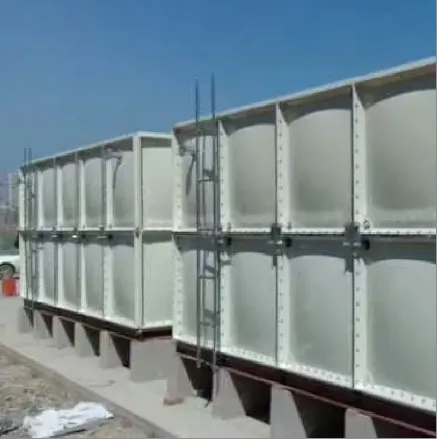loading...
- No. 9, Xingyuan South Street, Dongwaihuan Road, Zaoqiang County, Hengshui, Hebei, China
- admin@zjcomposites.com
- +86 15097380338
- Welcome to visit our website!
grp sandwich panels
Understanding GRP Sandwich Panels An Overview
GRP (Glass Reinforced Plastic) sandwich panels have become an essential element in modern construction and manufacturing industries. Known for their lightweight, strength, and versatility, these panels are composed of a core material sandwiched between two outer layers of GRP. The core can be made from various materials, including polyurethane, polystyrene, or other composite materials, depending on the specific application and desired properties.
Composition and Structure
The structure of GRP sandwich panels is what sets them apart from traditional building materials. The outer layers, or skins, are made from fiberglass, coated with resin, which provides excellent durability and resistance to environmental factors. The core material acts as an insulator, enhancing the thermal properties of the panel. This combination results in a product that is not only strong and lightweight but also boasts superior insulation and soundproofing qualities.
Advantages of GRP Sandwich Panels
1. Lightweight yet Strong One of the most significant advantages of GRP sandwich panels is their lightweight nature. This feature simplifies transportation and installation, reducing labor costs and time. Despite their light weight, these panels do not compromise on strength and can withstand significant loads, making them ideal for various structural applications.
2. Durability and Corrosion Resistance GRP is inherently resistant to corrosion, chemicals, and weathering, making these panels suitable for harsh environments. This durability ensures a longer lifespan compared to traditional materials, reducing maintenance needs and costs over time.
3. Thermal Efficiency The insulating properties of the core material help maintain temperature consistency within buildings, thereby improving energy efficiency. This characteristic is particularly beneficial in climates with extreme temperatures, where maintaining a stable interior environment is crucial.
4. Versatile Applications GRP sandwich panels are utilized across numerous industries, including construction, marine, automotive, and aerospace. In construction, they can be used for wall cladding, roofing, and partitioning. In the marine industry, these panels serve excellently in boat building due to their lightweight and water-resistant properties.
grp sandwich panels

5. Aesthetic Flexibility GRP panels can be manufactured in various colors, textures, and finishes, allowing for customization to meet specific design requirements. This aesthetic flexibility makes them a popular choice in architectural applications.
Environmental Considerations
In today’s eco-conscious environment, the sustainable aspects of materials have garnered significant attention. Many GRP manufacturers focus on using recycled materials in their core composition, and the panels can be designed for maximum energy efficiency, reducing overall waste during production and installation.
Challenges and Future of GRP Sandwich Panels
While GRP sandwich panels have numerous advantages, they are not without challenges. The initial cost can be higher compared to conventional materials, and specialized expertise may be required for installation. Additionally, recycling GRP at the end of its life cycle poses a challenge; however, ongoing research aims to address these concerns.
The future of GRP sandwich panels looks promising. As technology advances, improvements in manufacturing processes and recycling methods could further enhance their sustainability and cost-effectiveness. The construction industry’s continuing shift towards safer, more efficient building materials ensures that GRP sandwich panels will remain relevant and integral to modern architectural practices.
Conclusion
In summary, GRP sandwich panels represent a sophisticated solution for numerous industrial and construction applications. Their unique combination of lightweight strength, durability, and aesthetic flexibility positions them as a favored choice among builders and manufacturers. As innovation in this field progresses, we can expect to see even more applications and enhancements that will solidify their place in the construction landscape.
-
The Rise of FRP Profiles: Strong, Lightweight, and Built to LastNewsJul.14,2025
-
SMC Panel Tanks: A Modern Water Storage Solution for All EnvironmentsNewsJul.14,2025
-
GRP Grating: A Modern Solution for Safe and Durable Access SystemsNewsJul.14,2025
-
Galvanized Steel Water Tanks: Durable, Reliable, and Ready for UseNewsJul.14,2025
-
FRP Mini Mesh Grating: The Safer, Smarter Flooring SolutionNewsJul.14,2025
-
Exploring FRP Vessels: Durable Solutions for Modern Fluid HandlingNewsJul.14,2025
-
GRP Structures: The Future of Lightweight, High-Performance EngineeringNewsJun.20,2025
